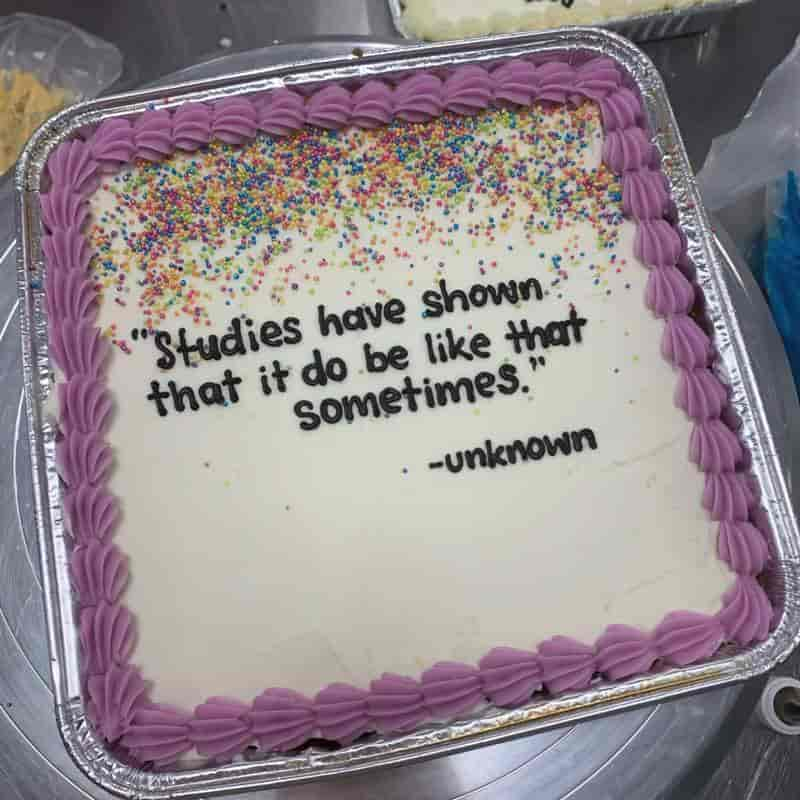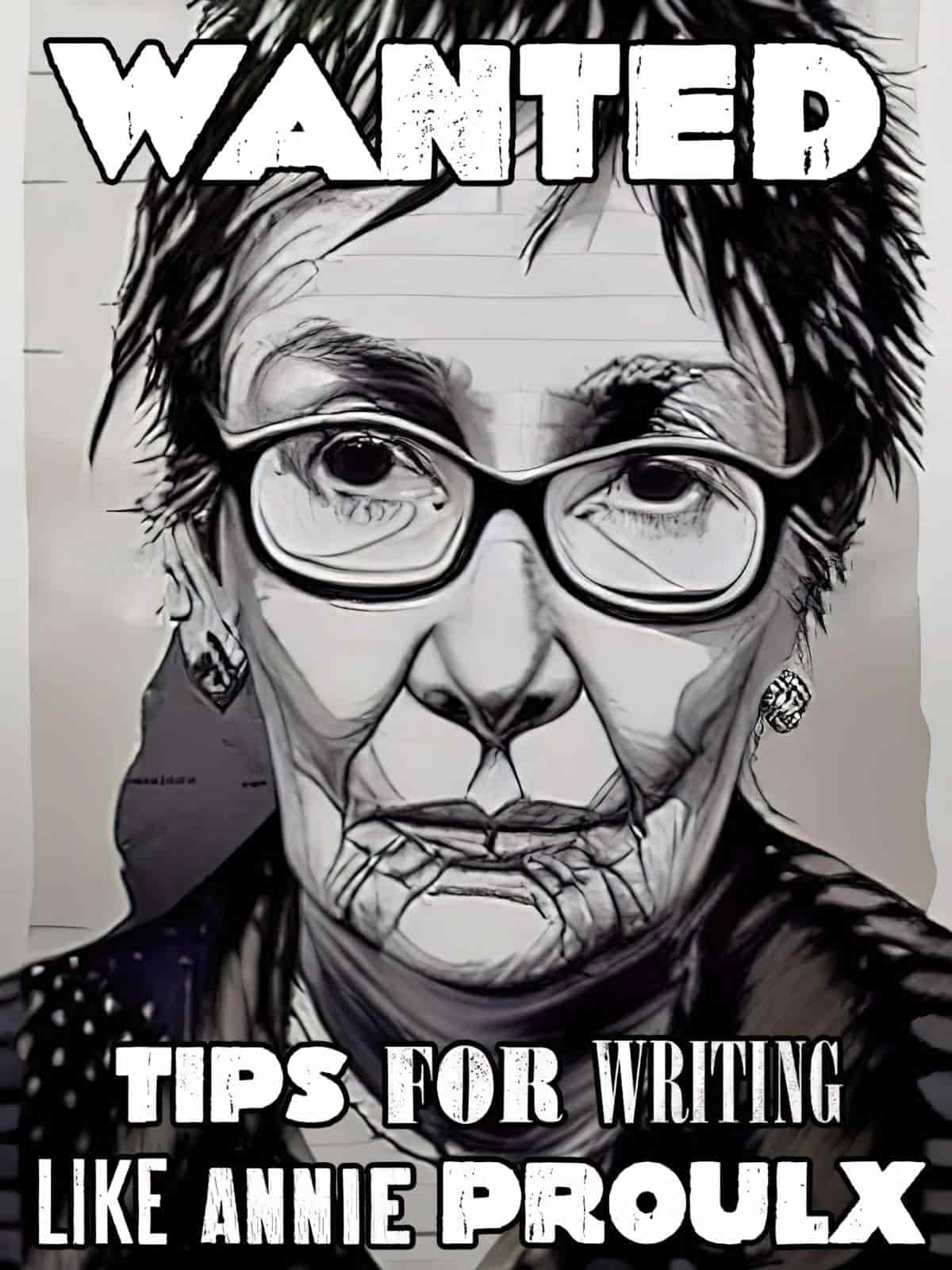Annie Proulx is an award-winning American novelist and short story writer, best known for The Shipping News and “Brokeback Mountain”. Below: features of her writing, as described by critics and readers (and me).
If the writer is trying to illustrate a particular period or place, a collection of short stories is a good way to take the reader inside a house of windows, each opening onto different but related views–a kind of flip-book of place, time and manners.
Annie Proulx, The Missouri Review
[In Close Range] “the focus was again on rural landscape, low population density, people who feel remote and isolated, cut off from the rest of the world, where accident and suicide rates are high and aggressive behavior not uncommon”
Annie Proulx, The Missouri Review
INFLUENCES
Proulx trained as an historian in the late 1970s.
- tall tales
- local legends
- folktales
- fairy tales
- myth
- a long tradition of American storytelling
Annie Proulx has said that when coming up with her stories she is influenced by reading:
- manuals of work and repair
- books of manners
- dictionaries of slang
- city directories
- lists of occupational titles
- geology
- regional weather
- botanists’ plant guides
- local histories
- newspapers
- bulletin boards
- scraps of papers she picks up from the ground
Annie Proulx visits places such as:
- graveyards
- collapsing coton gins
- barns and houses (to take photos)
- roadways
- laundromats, bars and stores (to hear locals talking)
When researching for her Wyoming stories, her research included:
- insects
- native bison
- hydrology ( the science that encompasses the study of water on the Earth’s surface and beneath the surface of the Earth)
- geology
- archeology
- immigration
- teepees
- big ranches and utopian colonies
Annie Proulx dislikes cities and much prefers rural landscapes. When writing, she starts with the landscape. Characters come out of that.
Every single thing I write, I start with the landscape. I start with the climate, the description, only when that is done — the particular place that affects what people eat, how they make their livings and so forth — and the story rolls out of the landscape.
Annie Proulx, Wyoming Library Roundup
She also seems to prefer places where other Americans prefer to escape from e.g. the Texas and Oklahoma panhandles (which join up with each other).
FEATURES OF ANNIE PROULX’S WRITING
It seems to me Annie Proulx’s stories fall into two general categories: told straight (but often with sardonic humour) and humorous. The line between the two types is of course fuzzy, but readers who like “Brokeback Mountain” or “On The Antler” won’t necessarily enjoy the humour of “The Contest“. (This is reflected in consumer reviews.)
I don’t see why one should not be able to write all kinds of stories. I’ve often thought when recalling people’s criticism of the early Chekhov — you know he wrote some hilarious short stories — that a writer who can write short stories is able to write any kind of story, and if he can he’d better. Because if he’s going to write a trick story and it obsesses him, then he’d better do it, to get it out of his system.
V.S. Pritchett
WEED MOTIFS
Motif: an element which is repeated in a story to convey some kind of meaning.
Proulx frequently utilises weeds as a motif. She does a lot with weeds, possibly because weeds have such excellent names, relating to theme: milkweed, fireweed, tumbleweed. Weeds are great because they do their own thing. They ‘invade’ a place and the humans can’t do much about it. They represent the vitality of the land.
Weeds are also a great way to show the concept of rhizomes, which is a great metaphor for many things. Rhizomes: fleshy underground stems. They grow underground or at ground level with many growing points or eyes, similar to potatoes but you can’t see them. Rhizomes therefore symbolise a network of connections hidden from immediate view.
Whereas weeds keep returning year after year, humans are gone in the comparative blink of an eye. In this way, weeds are one of the ways Annie Proulx draws a distinction between ‘human time’ and ‘natural time’.
MOTIFS OF FLOWING MATTER
Keep your eye out for mentions of flowing matter, whether it’s menstrual blood as a river or a stiff lake of coagulated blood. This ties into how we conceptualise the passing of time, and also how human time (short) links to natural time (eons).
Characters cannot be separated from their settings. The people are very much products of where they were born and raised.
Annie Proulx visits the places where she sets her stories. She discovered Newfoundland on a fishing trip then revisited ten times while writing The Shipping News.
ORGANICISM
We might also talk about ‘organicist metaphors’ in the work of Annie Proulx. Organicism is the philosophical position that states that the universe and its various parts (including human societies) ought to be considered alive and naturally ordered, much like a living organism.
NAMING OF PEOPLE AND PLACES
Proulx has a special interest in toponymy (the naming of places). Sometimes local refer to a place using their own local term. She appears to pick place names which best illuminate the characters who live in those places. Even when her place names are fictional, they very much sound as if they could exist. They would look completely at home on a real-world map.
Humans influence their surroundings; surroundings influence humans. Causality is reciprocal. Humans have agency while landscapes have hidden powers, governed by harsh natural laws.
Annie Proulx is not about the sublime (although the sublime is, frequently, about danger and fear). She’s definitely not about a post-Romantic appreciation of natural beauty. Landscapes are violent, brutal places. Proulx’s wide scientific reading lends a detached, cold tone to her work.
DOES ANNIE PROULX WRITE REALISM?
Whatever else critics say about the short stories of Annie Proulx, the author herself says she writes realism:
America is a violent, gun-handling country. Americans feed on a steady diet of bloody movies, televisions programs, murder mysteries. Road rage, highway killings, beatings and murder of those who are different abound. […] Most of the ends suffered by characters in my books are drawn from true accounts of public record: newspapers, accident reports, local histories, labor statistics for the period and place under examination. The point of writing in layers of bitter deaths and misadventures that befall characters is to illustrate American violence, which is real, deep, and vast.
Annie Proulx, The Missouri Review
The reason critics don’t buy this: her stories contain a commingling of the uncanny, the fantastic and magical realism. (Content creators and critics frequently use different terminology, or think of the same terms differently. Proulx might say that her use of the uncanny, fantastic and magic defamiliarizes at a symbolic level in order to expose and illuminate the abject realism.)
WORDS USED TO DESCRIBE THE WORK OF ANNIE PROULX
- stories about the harsh realities of life
- Postmodernist
- disenchantment with the Pioneer Spirit and the American Dream
- characters are grotesque freaks, monsters, chimerae, devils and demons, sometimes to remind us that we are reading fiction
- a destabilising, caustic sense of humour and sardonic irony
- disappearance and evanescence (the quality of being fleeting or vanishing quickly; impermanence)
- uncanny and fantastic (by Tzvetan Todorov’s definition, meaning modes which blend realism with supernatural phenomena.) The difference between uncanny and the fantastic: In the uncanny, impossible events eventually find a rational explanation. The reader isn’t left thinking there’s a supernatural reason for happenings. With the fantastic, the reader is left dangling, considering both rational and irrational explanations for events.
- magical realist (by Wendy Faris’s definition) Amaryll Chanaday distinguishes between magical realism and the fantastic like this: the fantastic bakes reader hesitation into the narrative, meaning the wondering if explanation of events can be attributed to the rational or the irrational. In contrast, magical realist stories doesn’t deal with this. There’s no conflict between ‘logical codes’. A useful word to use here is ‘antimony’, meaning a contradiction between two beliefs or conclusions. A type of paradox. Karen Rood describes magical realism as follows, writing that Proulx’s plots “are occasionally interrupted by excursions into magical realism, a technique in which a plausible narrative enters the realm of fantasy without establishing a clearly defined line between the possible and impossible” (Rood 13).
- ‘As in the early days of the genre, when the short story was meant to offer entertaining stories, Proulx’s language tends to be truculent, often vernacular‘ (Bénédicte Meillon)
- sinister choices of subjects
- overall grimness
- morbid
- tragic
- dehumanizing (not a result of lack of empathy on the part of the author, but a comment on what society does to people)
SETTINGS OF ANNIE PROULX’S WORK
many of her stories are explicitly anchored in the history of the United States, and abound with references to background historical events and to real places.
Bénédicte Meillon
LIVING SETTINGS
Critics commonly say that Annie Proulx’s settings are rich enough to be considered a character in their own right. Authors frequently give human characteristics to landscapes and other aspects of setting, but there are author-specific reasons for doing this. For example, a horror writer might turn hills into a monster to create an ominous, menacing atmosphere. In Proulx’s case, characters humanize nature, and in turn become naturalized themselves. Proulx’s landscapes are giant, living organisms and, where possible, she seems to remove the distinction between human society, vegetable matter/vegetation and the (non-human) animal kingdom. For example, the sky might be ‘bruised’ with purple swellings like rotten spots in peaches. That description (from the opening chapter of Postcards) combines a metaphor and simile in a single sentence, unites sky and earth, vegetable matter with biology.
LONG HISTORY: HUMAN TIME VS NATURAL TIME
Proulx has said numerous times in interviews that the French Annales School has been hugely influential on her fiction writing. Proulx became familiar with the concept of longue durée (long history). In the 1920s, Lucien Febvre and Marc Bloch came up with a new way of studying history, moving away from gathering of historical facts and biography towards a more encompassing approach which includes influence of the present milieu. In order to understand history, we must consider contemporary society. History and geography come together. When looking at history in this way, disciplines such as linguistics, demography and anthropology are incorporated.
Frankly, almost every single one of the stories that I write about in Wyoming are founded in historical fact.
Annie Proulx, Wyoming Library Roundup 7
Much of what I write is set in contemporary North America, but the stories are informed by the past; I like stories with three generations visible […] The present is always pasted on layers of the past.
Annie Proulx, The Missouri Review
GOTHIC SETTING
Annie Proulx’s untameable Wyoming sometimes reads as a Gothic backdrop–one might say a nineteenth-century wilderness, à la Wuthering Heights, with desert and sagebrush instead of moors and heath–creating an ominous and threatening environment. […] Whether perceived by natives or outsiders, Proulx’s antediluvian landscapes often seem animated, as if endowed with a volition of their own
Bénédicte Meillon
LOCAL PREFERENCE
Although there are hints of wider world events going on in Annie Proulx’s stories, local happenings are front and centre.
CHARACTERS
In general, individuals are helpless and struggle bitterly against chaotic and fragmented settings. Death and suffering are never far away.
WOMEN
Sometimes, the women in Proulx’s work represent the land, and illuminate the love-hate feelings male characters have towards both women and the land. The brevity of coitus can remind male characters of the shortness of life on this earth.
THE SOUTHERN GROTESQUE
Many of Proulx’s anti-heroes read as grotesque figures reminiscent of the Southern freak tradition inherited from Flannery O’Connor or Sherwood Anderson.
Bénédicte Meillona
Ottaline of “Bunchgrass End Of The World” is a good example of that.
THEMES
DETERMINISM AND POSSIBILISM
Proulx has an ambivalent position somewhere between determinism and ‘possibilism’. Determinism entails that we do what we do because everything has led us to acting exactly how we act. Every decision we make seems to be the best decision at the time, given our histories and information.
The concept of ‘possibilism’ came out of determinism, since we clearly need an opposite word to describe ‘not determinism’. Vidal (the French Annales guy Proulx likes so much) started people thinking about the human-land relationship (which later became known as possibilism). He rejected environmental determinism. People have agency, far more so than other animals and plants. We can adapt to our environments. We can change them. We are all both active and passive subjects and objects of our environment.
The twin forces of determinism and possibilism undergird all of Annie Proulx’s fiction.
What does Proulx herself have to say about determinism in her work?
Geography, geology, climate, weather, the deep past, immediate events, shape the characters and partly determine what happens to them, although the random event counts for much, as it does in life.
Annie Proulx, The Missouri Review
Vidal was concerned with probabilities and contingencies, and both can be seen in Proulx’s work.
- Probability: the extent to which an event is likely to occur, measured by the ratio of the favourable cases to the whole number of cases possible.
- Contingency: the result of two or more causal chains of events
Vidal, unlike his contemporaries and forebears, did not look at the landscape and see evidence of the hand of God. Likewise, there’s no evidence of spirituality in Annie Proulx’s work. We’re on our own down here. That said, biblical references abound. But they are utilised ironically. Christian American characters have a set of ideals which are frequently subverted by events which play out.
OPENING PARAGRAPHS
BARKSKINS (A NOVEL)
In twilight they passed bloody Tadoussac, Kebec and Trois-Rivieres and near dawn moored at a remote riverbank settlement. Rene Sel, stiff black hair, slanted eyes, yeux brides–in ancient times invading Huns had been at his people–heard someone say “Wobik.” Mosquitoes covered their hands and necks like fur. A man with yellow eyebrows pointed them at a rain-dark house. Mud, rain, biting insects and the odor of willows made the first impression of New France. The second impression was of dark vast forest, inimical wilderness.
Barkskins
THE SHIPPING NEWS (A NOVEL)
Here is an account of a few years in the life of Quoyle, born in Brooklyn and raised in a shuffle of dreary upstate towns.
Hive-spangled, gut roaring with gas and cramp, he survived childhood; at the state university, hand clapped over his chin, he camouflaged torment with smiles and silence. Stumbled through his twenties and into his thirties learning to separate his feelings from his life, counting on nothing. He ate prodigiously, like a ham knuckle, buttered spuds.
The Shipping News
ACCORDION CRIMES (A NOVEL)
It was as if his eye were an ear and a crackle went through it each time he shot a look at the accordion. The instrument rested on the bench, a lacquer gleaming like wet sap. Rivulets of light washed mother-of-pearl, the nineteen polished bone buttons, winked a pair of small oval mirrors rimmed in black paint, eyes seeking eyes, seeking the poisonous stare of anyone who possessed malocchio, eager to reflect the bitter glance back at the glancer.
Accordion Crimes
THAT OLD ACE IN THE HOLE (A NOVEL)
In late March Bob Dollar, a young, curly-headed man of twenty-five with the broad face of a cat, pale innocent eyes fringed with sooty lashes, drove east along Texas State Highway 15 in the panhandle, down from Denver the day before, over the Raton Pass and through the dead volcano country of northeast New Mexico to the Oklahoma pistol barrel, then a wrong turn north and wasted hours before he regained the way.
That Old Ace In The Hole
FINE JUST THE WAY IT IS (SHORT STORY COLLECTION)
The Mellowhorn House was a rambling one-story log building identifying itself as western–the furniture upholstered in fabrics with geometric “Indian” designs, lampshades sporting buckskin fringe. On the walls hung Mr. Mellowhorn’s mounted mule deer heads and a two-man crosscut saw.
“Family Man”
Duane Fork, the Devil’s demon secretary, rushed around readying the suite of offices. He sprinkled grit and dust on the desktops, gravel on the floor, pulled closed the heavy red velvet drapes and sprayed the room with Eau de Fumier. Precisely on the dot of midnight he heard the familiar hoof steps coming down the hallway and drew up to attention.
“I’ve Always Loved This Place”
Archie and Rose McLaverty staked out a homestead where the Little Wood comes rattling down from the Sierra Madre, water named not for miniature and obnoxious flora but for P.H. Weed, a gold seeker who had starved near its source. Archie had a face as smooth as a skinned aspen, his lips barely incised on the surface as though scratched in with a knife. All his natural decoration was in his red cheeks and the springy waves of auburn hair that seemed charged with voltage. He usually lied about his age to anyone who asked–he was not twenty one but sixteen. The first summer they lived in a tent while Archie worked on a small cabin. It took him a month of rounding up stray cows for Bunk Peck before he could afford two glass windows.
“Them Old Cowboy Songs” (first part of a very long opening paragraph)
Those who think the Bermuda Triangle disappearances of planes, boats, long-distance swimmers and floating beach balls a unique phenomenon do not know of the inexplicable vanishings along the Red Desert section of Ben Holladay’s stagecoach route in the days when Wyoming was a territory.
“The Sagebrush Kid”

The black secondhand Essex rattled and throbbed along the frozen dirt road. The sky drooped over the undulating prairie like unrolled bolts of dirty wool, and even inside the car they could smell the coming snow. There was no heater, and Helen, a young woman with walnut-colored hair, was wrapped from her shoulders down in an old-fashioned buffalo robe, the fur worn to the hide in places. At a small cairn of stones her husband, Hi Alcorn, turned left onto a faint track.
“The Great Divide”
Gradually the familiar sounds of night and sleep gave way. A few men came awake at once and raised up on their elbows, listening to the change. The chill air presaged autumn. In the blue draw coyotes argued. A sated owl on the island hooted and the river choked through sunbaked stones. But these were common sounds, and had not wakened the men. Silence disturbed their sleep, the cessation of a voice. The shaman had stopped chanting. Night after night the thready monotone of his prayers and invocations had formed the solemn background of the band’s dreaming. His beckoning, coaxing voice had become as elemental as chirring grasshopper wings or the rattle-stick cries of flying cranes. Forbidden to eat during the ceremonial invocation the old man had grown gaunt and his voice had wavered almost to inaudibility. But now he was quiet, task completed, and into the vacuum of silence rushed excitement.
“Deep-Blood-Greasy-Bowl”
It was a fine summer morning, a day predicted to break all heat records. The Devil sat at his fireproof metal desk enjoying a Havana cigar and a triple espresso while he read the New York Times, The Guardian and the Botswana Survivor (asbestos edition). He asked Duane Fork, his private secretary demon, to open the windows so he could enjoy the fresh billows of sulfur from the pits and the stunning vista of multithousands of refineries, ship-breaking yards, oil wells and methane gas pads stretching to the horizon. On the wall hung a steel plate depicting the reverse image of Krakatoa exploding. When he had finished the cigar, the coffee and the papers, he checked his e-mail. As usual, no one had sent anything to Devil@hell-org except spammers promising a larger penis, hot stocks, cut-rate office supplies and surefire weight loss.
“Swamp Mischief”
Marc was fourteen years older than Catlin, could speak three languages, was something of a self-declared epicure, a rock climber, an expert skier, a not-bad cellist, a man more at home in Europe than the American west, he said, but Catlin thought these differences were inconsequential although she had only been out of the state twice, spoke only American and played no instrument. They met and fell for each other in Idaho, where Marc was working as a volunteer on the fire line and Catlin was dishing up lasagne in the fire center cafeteria. After a few months they began to live together.
“Testimony of the Donkey”
Her mother had been knockout beautiful and no good and Dakotah had heard this from the time she recognized words. People said that Shaina Lister with aquamarine eyes and curls the shining maroon of waterbirch bark had won all the kiddie beauty contests and then had become the high school slut, knocked up when she was fifteen and cutting out the day after Dakotah was born, slinking and wincing, still in her hospital johnny, down the back stairs of Mercy Maternity to the street, where one of her greasy pals picked her up and headed west for Los Angeles. It was the same day television evangelist Jim Bakker, a found-out and confessed adulterer, resigned from his Praise the Lord money mill, his fall mourned by Bonita Lister, Shaina’s mother. Bonita’s husband, Verl, blamed the television for Shaina’s wildness and her hatred of the ranch.
“Tits Up In A Ditch”




